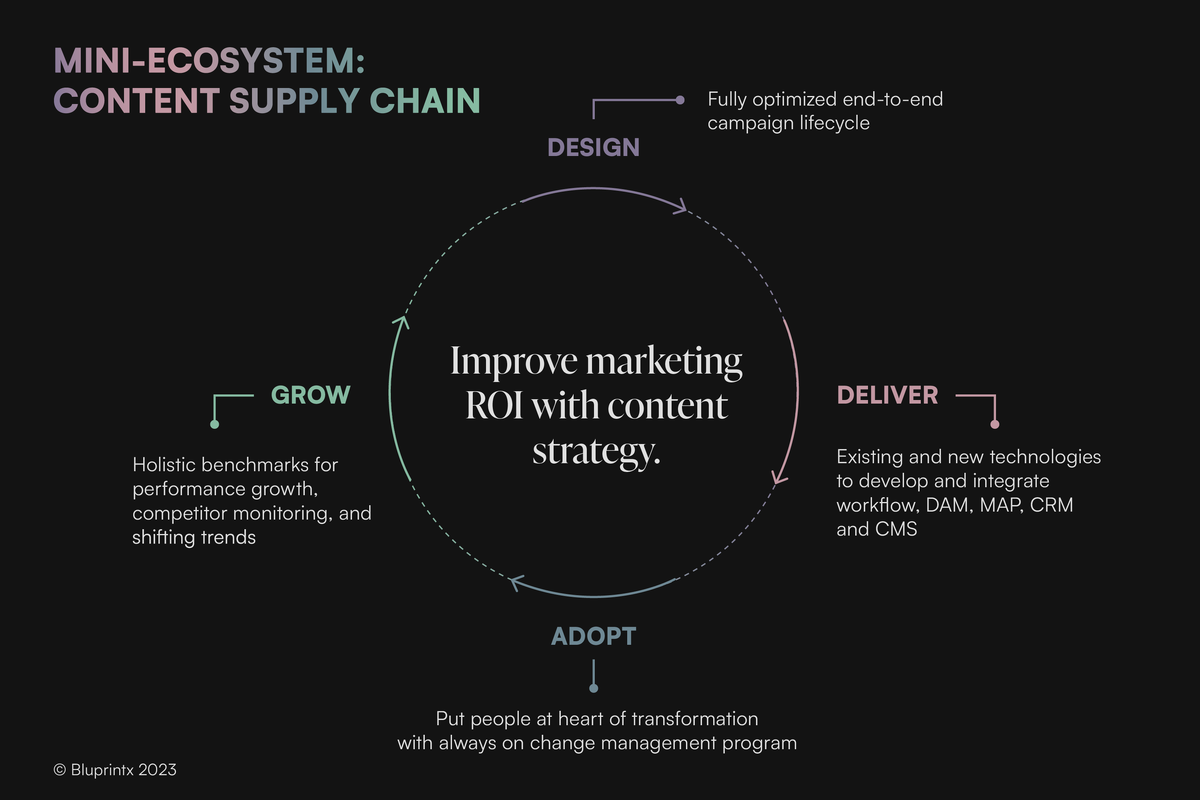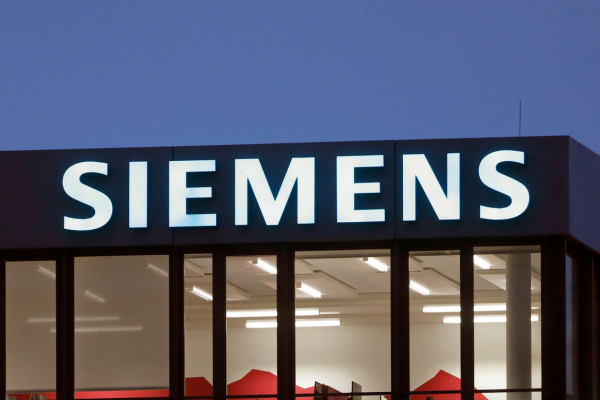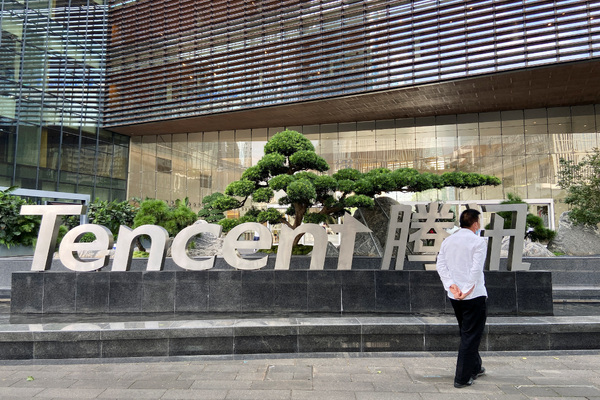Why too many businesses are getting it wrong with digital transformation
Sponsored by BluprintxDigital transformation needs to be tackled as a series of interconnected mini-ecosystems across people, technology, workflow and data

Effective digital transformation delivers improved profitability, increased revenue and streamlined operations. These are high stakes for business growth. So why are so many businesses still failing to digitally transform?
Having surveyed global business and marketing leaders, the first Bluprintx Enterprise Growth Report has unearthed some insights into the reasons why.
Connecting the dots
Half of our survey respondents believe their business’s processes, people, structure, tech stack and automation aren’t being used optimally, and may struggle to deliver on targets.
At the same time, the C-suite wants to see teams expand their capabilities. By rethinking technology usage, businesses can expand teams’ capabilities and achieve ambitious growth plans without increasing headcount or enacting costly upskilling initiatives. Harnessing AI, for example, can streamline workflows, boost people’s productivity and make more efficient and effective use of data.
Ultimately, businesses must connect the dots across people, technology, workflow and data to be successful. Growth journeys should also leverage a lifecycle model, as this enables executives to better understand customers, optimise marketing efforts and drive sustainable business growth.
Understanding the growth lifecycle
Using insights and experience from successfully delivering hundreds of global digital transformation projects, the Bluprintx growth lifecycle is underpinned by four pillars.

Design
Empower leaders to prioritise key initiatives and create a roadmap of tailored process improvements, technology enhancements and roles and responsibilities.
Deliver
Powered by data and technology, create a growth ecosystem that enhances operating models and synchronises siloed teams.
Adopt
Embed growth into business practice and maintain it over time by creating a common language across teams, and developing a collective understanding that breaks down silos.
Grow
Optimise business performance by ensuring teams remain outcome-focused and on track to sustain growth.
The growth lifecycle is a tested methodology to improve and continually optimise business performance. At a high level, this continuous cycle guides the digital transformation of businesses, wherever they are in their journey. However, to successfully drive sustainable growth, leaders need to stop thinking about digital transformation as a multi-year business-wide initiative.
Digital transformation is ever-evolving and should focus on smaller sprints to rapidly unlock growth opportunities – creating mini-ecosystems which are interconnected.
Making a big impact with mini-ecosystems
A mini-ecosystem approach breaks down the larger ecosystem into manageable units, allowing organisations to adapt and pivot quickly in response to shifting market dynamics and technological advancements.
This approach is not only efficient and cost-effective, but also fosters agility, making businesses more resilient and adaptable.
At Bluprintx, we’ve pioneered the creation of mini-ecosystems and developed solutions that help businesses take an agile approach to growth across sales, marketing and services.
Connecting the dots across people, technology, workflow and data, the growth lifecycle defines what needs to be addressed within a mini-ecosystem. Take content marketing, for example. Despite content having a fundamental role to play in growth, businesses are still failing to manage content effectively.
Siloed teams, broken processes, a lack of insights and skills: these are just some of the common barriers stopping businesses from realising their growth potential through content marketing strategies.
Establishing the content supply chain as a mini-ecosystem changes things, creating a structured approach to content – across the whole organisation.
The growth lifecycle provides guiding principles to build out what needs to happen at each stage. This enables the development of an actionable plan that connects the dots across people, technology, workflow and data.

Once the content supply chain is established as a mini-ecosystem, continual optimisation ensures it remains efficient and effective. Any changes to the external environment, or advances in technology, can be considered and implemented at speed according to business priority and need.
Connecting this mini-ecosystem into the wider marketing, sales and service growth ecosystem drives productivity, customer engagement and revenue. It also means it can be decoupled and optimised independently.
A cornerstone for growth
As the first Bluprintx Enterprise Growth Report found, enterprise businesses do have the tools to drive growth. They just aren’t being used optimally. But by breaking down company-wide digital infrastructure into smaller, more manageable ecosystems, business leaders will be empowered to quickly make improvements in one area without disrupting others.
By making operations more agile and effective, these mini-ecosystems are the cornerstone of accelerated and sustainable growth.
Explore the goals, challenges and opportunities facing business and marketing leaders today. Learn how global executives feel about the months ahead – and how they plan to maximise growth, efficiency and marketing ROI. Access the Bluprintx Enterprise Growth Report now.

Lee Hackett, Bluprintx CEO
Lee Hackett is responsible for Bluprintx’s strategic growth, providing straight-talking C-level consultancy for some of the largest organisations in the world. A seasoned operator and investor of start-up businesses, Lee specialises in driving revenue and improving scalability through data and technology. He’s played a leading role in the creation and growth of numerous start-ups across three continents, driving more than £50 million in net new revenue without a single penny of outside investment.

Business Reporter Team
You may also like
Related Articles
Most Viewed
Winston House, 3rd Floor, Units 306-309, 2-4 Dollis Park, London, N3 1HF
23-29 Hendon Lane, London, N3 1RT
020 8349 4363
© 2025, Lyonsdown Limited. Business Reporter® is a registered trademark of Lyonsdown Ltd. VAT registration number: 830519543





